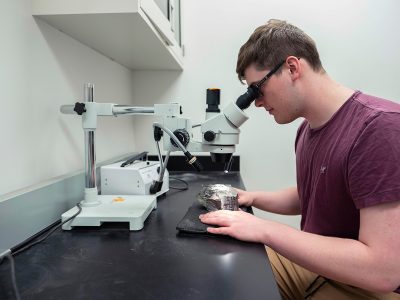By Lisa Gregoire
Photos by Fangliang Xu
About two months ago, when something started growing out of a knee-high, starburst-shaped succulent in a Carleton University greenhouse, plant guru Ed Bruggink noticed right away and began investigating.
What he discovered was extraordinary.
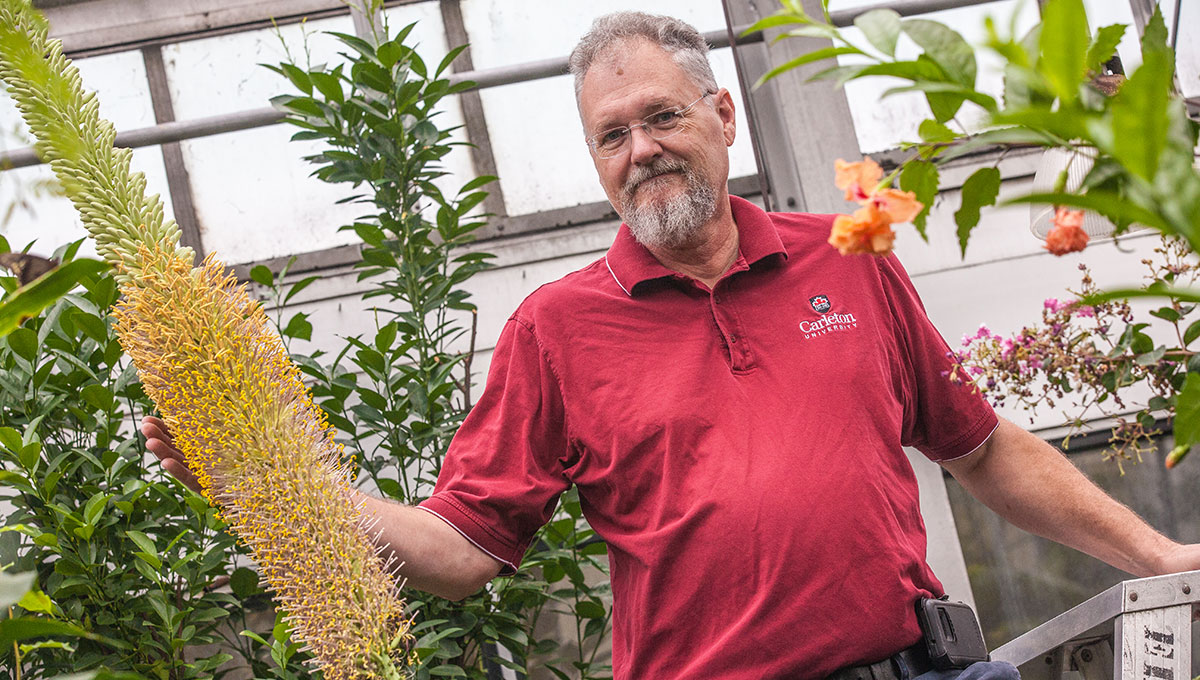
Carleton University greenhouse, plant guru Ed Bruggink
The Queen Victoria agave, native to Mexico, lives for decades and blooms only once in its lifetime. But that’s not all. The giant bloom—called a raceme—takes weeks to mature and can reach giraffe heights of five metres. At one point, Bruggink said, it was growing about 30 centimetres every couple of days.
“We looked at photos online and said, whoa, we got something really special here,” Bruggink said.
At first, the bloom resembled a huge asparagus—it’s actually a member of the Asparagaceae family, but over time, the top third of the woody stalk developed a brush of delicate yellow flowers which started opening Oct. 11.
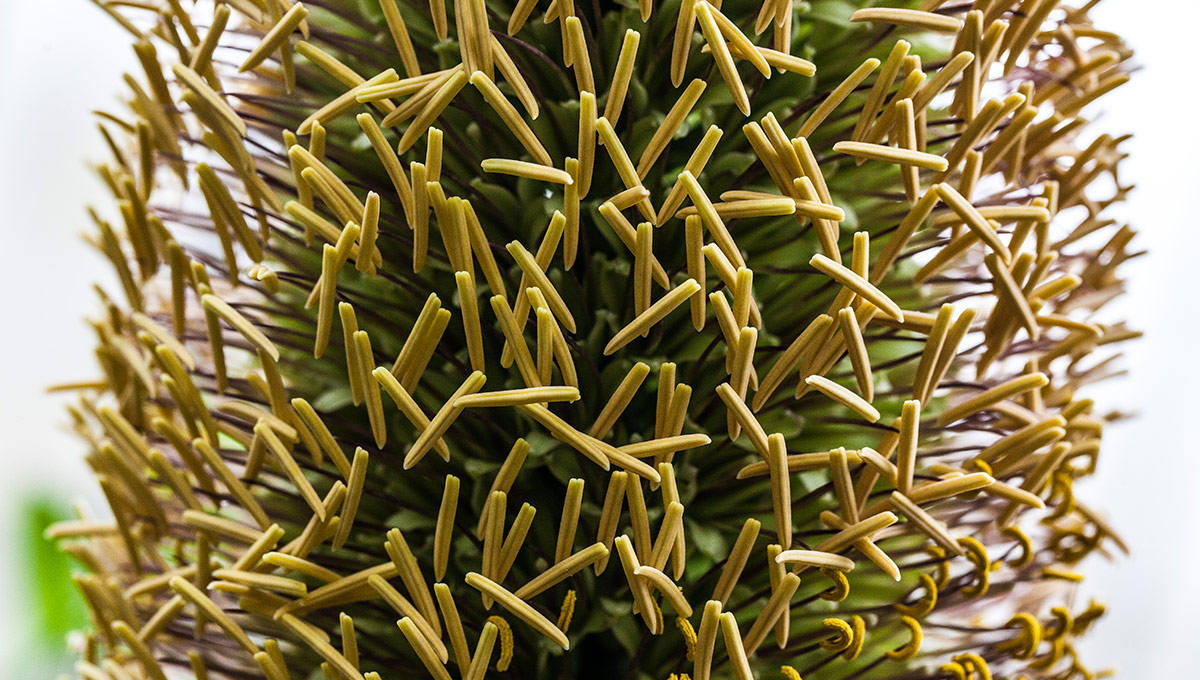
A Once-In-A-Lifetime Event
Bruggink, a horticulturalist who has managed the Department of Biology’s greenhouses for 38 years, was delighted to be a witness to this unusual, once-in-a-lifetime event, especially since it coincided with the 20th anniversary of the university’s Butterfly Show which Bruggink launched and runs annually.
“It’s almost like it waited until the (anniversary) to do this for us,” Bruggink said during a recent visit to the Nesbitt Building’s display greenhouse.
“That’s what people were saying.”
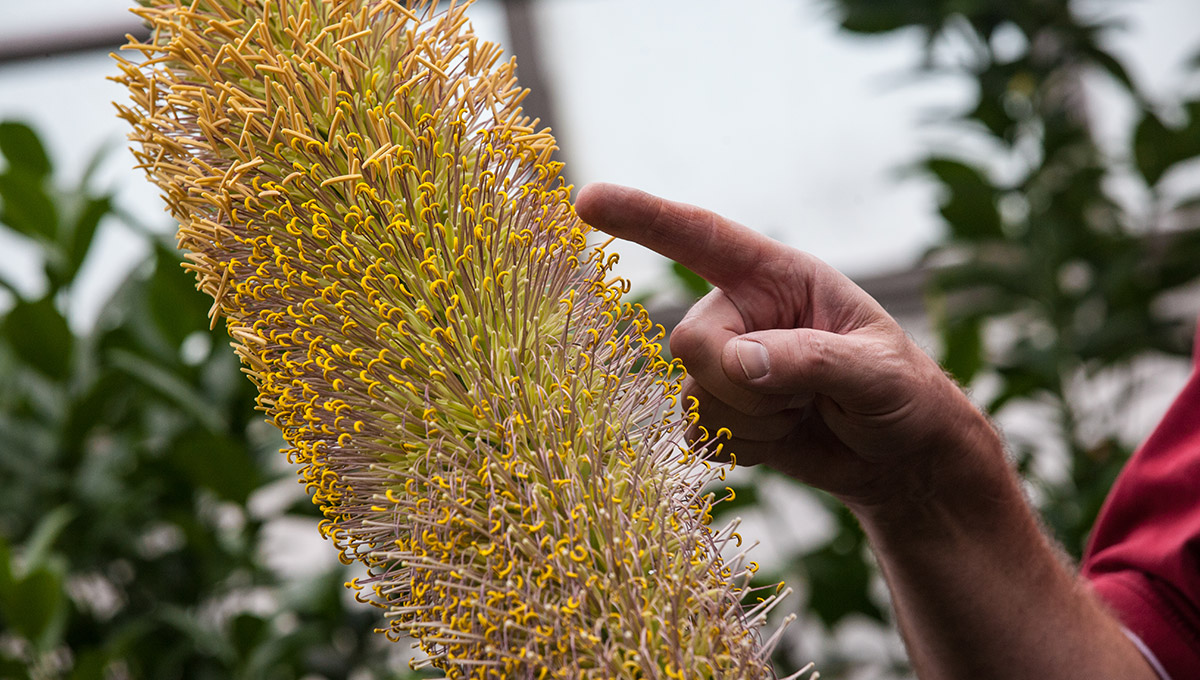
Sadly, the agave bloom means it’s about to die and already the bottom part of the plant is turning brown as energy channels into the roughly three-metre-high blossom. As the plant reaches its end of life, the colossal blossom will bend over, hit the ground and disperse its seeds. Bruggink plans to harvest the seeds and hopefully grow new plants.
“It’s a beautiful finale, a beautiful demise. Amazing too, that it’s putting so much effort into surviving, continuing on. I admire that,” he said.
“We’ve got to keep it going. This plant is trying to survive and we’re going to help it.”
The agave’s exact age is unclear. Bruggink estimated it was at least 30 years old and could have been there when he first got the job, nearly four decades ago. Some Queen Victoria agaves live to be 50 or more, he said.
The decorative multi-leafed cactus which resembles a rosette was one of many plants that once comprised a desert zone in one of Carleton’s greenhouses. After that collection was dismantled in 2000, Bruggink couldn’t bear to part with his succulent friends so he corralled them into the research wing and continued to nurture them.

“A Beautiful Finale, A Beautiful Demise”
Over the years, the desert plants moved here and there as the needs of Carleton biologists evolved. Most recently, the agave had to be moved several times as the greenhouses underwent renovations to install a new energy-efficient glycol heating system.
It’s possible that movement impacted the plant and triggered the blooming process, Bruggink said, but it may have bloomed anyway, considering its age. Regardless, interest in the otherwise modest monocot skyrocketed, thanks to the popular Butterfly Show.
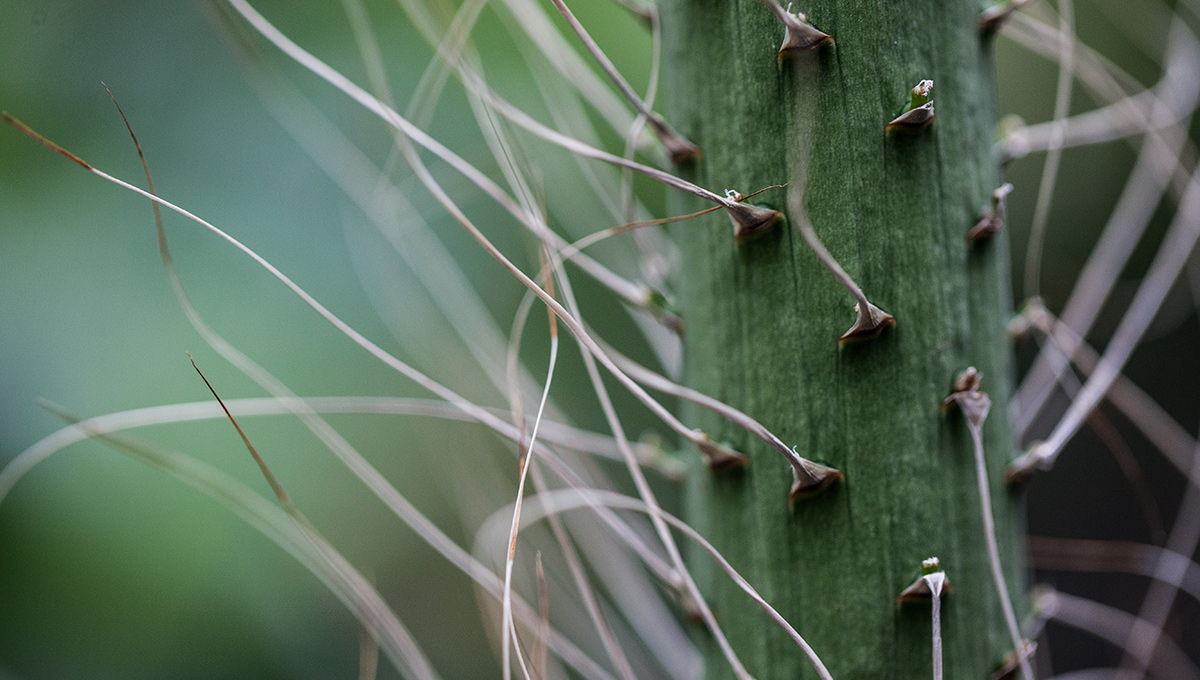
Because of the high ceiling, and the opportunity to share the unique plant with the public, Bruggink and his colleagues moved the cactus into the butterfly greenhouse just before the show’s opening. The warm, tropical home must have felt strange for the cactus and indeed the butterflies, though curious, never landed on the foreign thing. Still, the agave stood tall and proud behind a little gate for all to see.
Bruggink said some visitors—about 14,000 in total this year—were as enraptured with the plant as they were with the flitting butterflies.
Other than in the late 1990s, when biologists created several new strains of hibiscus, including the Carleton University Hibiscus with a red flower and near-black centre, Bruggink was hard-pressed to recall a comparably momentous botany event during his time at the university.
The Department of Biology has roughly 1,000 plants representing more than 300 species in 14 greenhouses. Twelve greenhouses are used for research and two are for public display, including the one which houses the annual butterfly show and, for now, the agave’s final hurrah.
Unfortunately, that greenhouse is now closed until around mid-November when the butterflies, many of them non-native to North America, will perish. For now, the agave bloom can be seen through the greenhouse glass.
The story could have ended there, but it didn’t.
Bruggink led us down a warren of hallways away from public view and into a secluded greenhouse where the desert plants now reside and there, among the Parodia magnifica and Haworthia, sat another Queen Victoria agave, about half the size of the other, this one vibrant green with rigid, barb-tipped shoots.
“There it is,” Bruggink said, like a proud father.
“Who knows? Maybe one day I’ll see that one bloom too.”
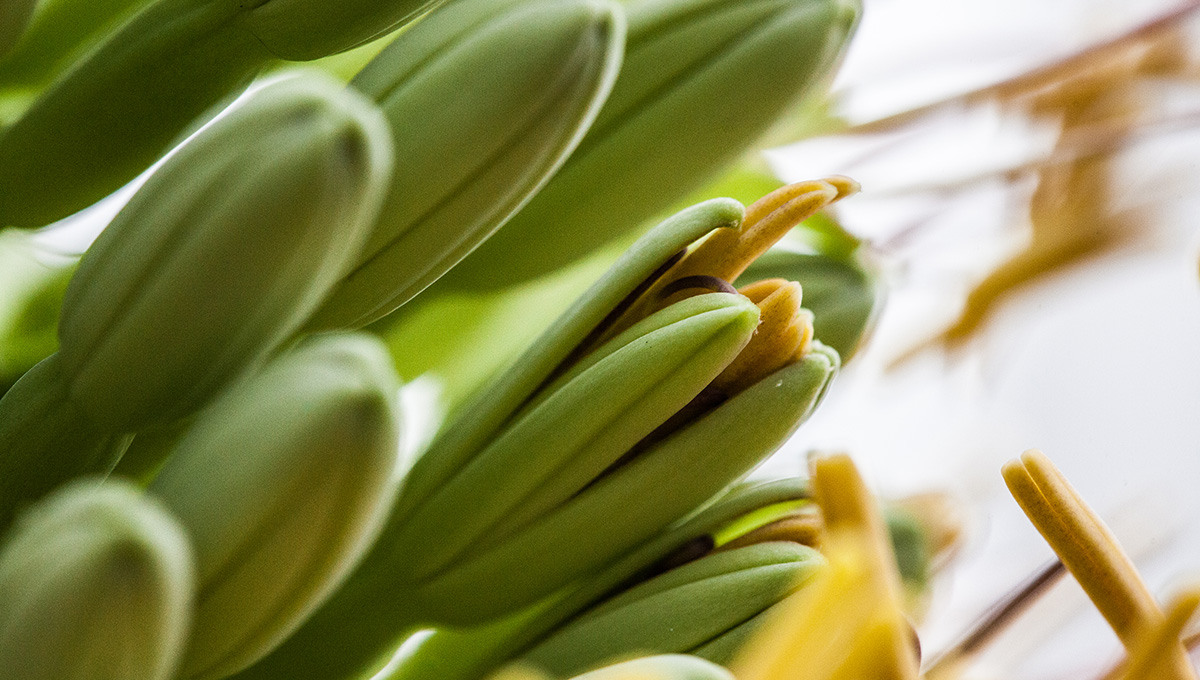
Friday, October 18, 2019 in Biology, Faculty of Science
Share: Twitter, Facebook
